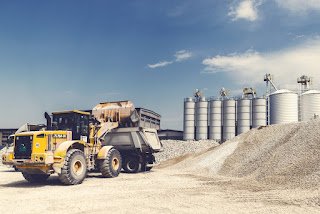When soil Available at a construction site is not Suitable For our construction Due is its low-level Property, then its required to improved engineering property (like Permeability, Shear strength ) and make our soil ready for construction, all these processes of improving soil is called Soil stabilization. the stabilization of any soil includes the term compaction, drainage, and Preconsolidation mean these cover in the stabilization process.
With the help of the soil stabilization process, we quickly make good workability condition on any type of soil. specially trafficable area and in case of emergency military movement.
Method of Soil Stabilization
- Soil stabilization with cement
- Mechanical Stabilization of Soil
- Bituminous Stabilization
- Soil stabilization using lime
- Chemical Stabilization of Soil
- Fabric and Geotextile Stabilization of Soil
- Thermal Stabilization of Soil
- Reinforced Stabilization of Soil
- Grouting Stabilization of Soil
- Electrical Stabilization
lime Soil stabilization
Generally Hydrate lime used the amount of lime mix with soil is between 2 – 10 % but in a case when lime only used for improved soil chemical characteristic 1 – 3% is sufficient.
Some soil like the sandy soil is not influenced by lime effect, this type of soil is combined with clay and fly ash before mixing with Lime to obtain proper property of soil.
Chemical Soil stabilization
Sodium silicate –
this is injected to soil mass which makes soil impervious and increases the strength of the soil. but the strength and the impervious property reduced when soil mass come in contact with air and water.
Mechanical stabilization of soil
Basically, a Desire Grading of soil is obtained by proper balancing the quantity of coarse grain and fine grain soil. in term of mechanical stabilization coarse graded soil is aggregate and fine graded soil is the binder.
when we mix these two ( aggregate give resistance to compression and strength and binder give stability to aggregate to its place) a stable soil surface is archive which has a high bearing capacity as compare to without stabilization.
cement Soil stabilization
the soil which needs strength increase is mix with cement ( generally Portland cement ) and water mix, which give a strong strength to the soil. also according to what water-cement ratio added to soil, there is three division.
5 – 14 % of cement with normal Quantity of water called Normal soil cement
5 – 14 % of cement with a large quantity of water as compared the above to make Plastering mortar called Plastic soil cement
< 5% of cement with a normal quantity of water to make semi-hardening material this type called Cement modified soil


